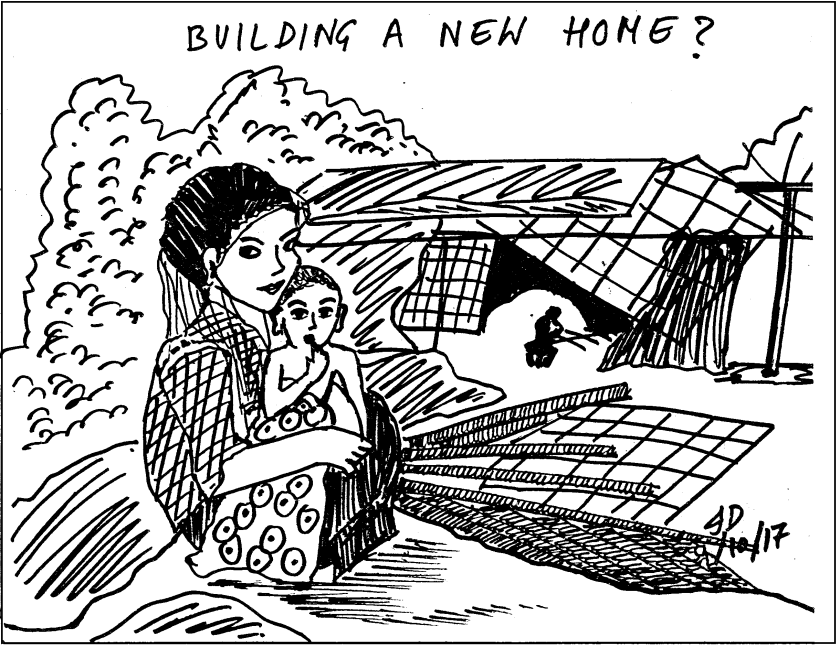
The unfolding of the crisis
As per latest reports, more than half a million Rohingya people, comprising men, women and children, have been compelled to leave Myanmar and enter Bangladesh since the escalation of violence in the Rakhine region since August 2017. The Rohingyas, Muslim minorities in the Buddhist-majority Myanmar, have faced discriminatory policies in relation to several matters such as marriage, family planning, education and employment. The government had also denied them access to legal documentation, making them effectively ‘stateless’. After a group of people, known as the Arakan Rohingya Salvation Army, (referred to as “insurgents” or “terrorists”) attacked 30 police outposts in the area inhabited by the Rohingyas, the military launched a fatal offensive against the inhabitants, destroying hundreds of Rohingya villages and forcing them to flee to other countries such as Bangladesh.
International condemnation
The mass exodus of the Rohingyas has alarmed the entire international community and the government of Myanmar, being led by Nobel Peace laureate, Aung San Suu Kyi, has been exposed to harsh criticism for failure in dealing with one of the worst humanitarian crises in the world. While the United Nations High Commissioner for Human Rights described the persecution of the Rohinyas in Myanmar as a “textbook example of ethnic cleansing”, several UN experts condemned the violence perpetrated against the minority community, stating that serious human rights violations and abuses had taken place, “including extrajudicial killings, excessive use of force, torture and ill-treatment, sexual and gender-based violence, and forced displacement, as well as the burning and destruction of over 200 Rohingya villages and tens of thousands of homes”.
Failure of world leaders
While the limited economic resources of Bangladesh are getting stretched due to the inflow of the Rohingya refugees, several international organizations and countries have shown their support by leading initiatives to offer humanitarian aid and assistance. However, the lack of a coherent global response to address the unfolding crisis is a cause for serious concern. Amnesty International, one of the leading human rights organizations, has called out the world leaders for their abject failure in delivering solutions to the refugee crisis. Secretary General, Salil Shetty, said that, “Instead of attending summits to shake hands with each other and make promises they don’t intend to keep, heads of state should show some leadership. That means delivering a comprehensive plan to protect civilians in conflict, ending crimes against humanity and implementing proper solutions for refugees such as the Rohingya who are in a desperate situation.”
Conclusion
According to The Envoy, a humanitarian crisis of this scale can be prevented by adopting measures which reflect far-sightedness. The United Nations, in cooperation with the international community, has to play a proactive role in monitoring the human rights situation in volatile regions across the globe, identify the red flags, and take quick, effective actions to control the state of affairs before they descend into the dark pit of ‘beyond control’. It is not an easy task but the United Nations has to lead the way in delivering concrete, positive outcomes. That is how it will truly achieve what it stands for.
For an overview of The Envoy’s coverage of Human Rights issues, please visit http://www.theenvoy.in/Human-Rights/

One thought on “The Rohingya Crisis & Need for ‘Prevention rather than Cure’”